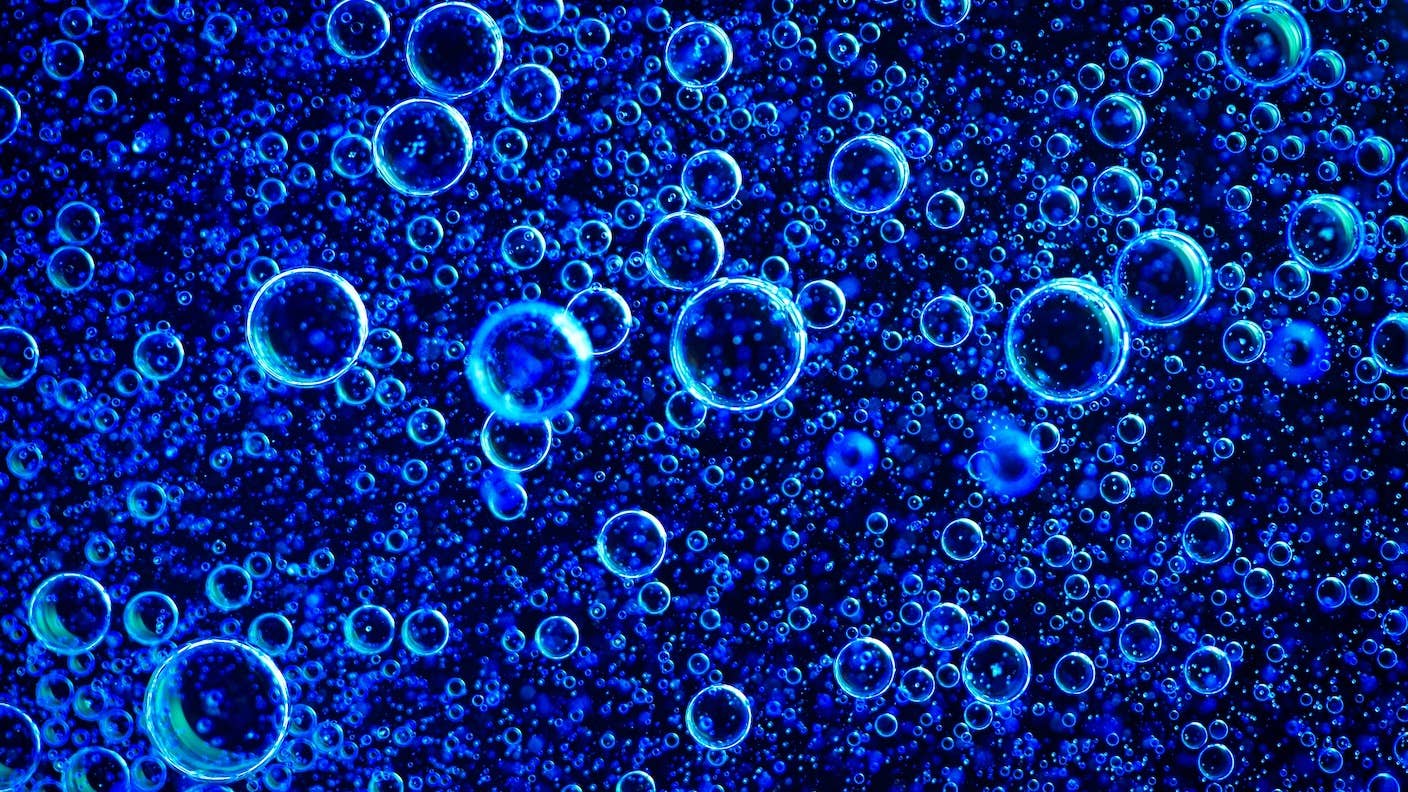The First Cells May Have Formed From Simple Fatty Bubbles Like These Ones

Share
The first spark of cellular life on Earth likely needed gift packaging.
Let me explain. With the holidays around the corner, we’re all beginning to order presents. Each is carefully packaged inside a box or bubble-wrapped envelope and addressed for shipping. Without packaging, items would tumble together in a chaotic mess and miss their destination.
Life’s early chemicals were, in a way, like these “presents.” They floated around in a primordial soup, eventually forming the longer molecules that make up life as we know it. But without a “wrapper” encapsulating them in individual packages, different molecules bumped into each other but eventually drifted away, missing the necessary connections to spark life.
In other words, cellular “wrappers,” or cell membranes, are key to packaging the molecular machinery of life together. Made of fatty molecules, these wrappers are the foundation of our cells and the basis of multicellular life. They keep bacteria and other pathogens at bay while triggering the biological mechanisms that power normal cellular functions.
Scientists have long debated how the first cell membranes formed. Their building blocks, long-chain lipids, were hard to find on early Earth. Shorter fatty molecules, on the other hand, were abundant. Now, a new study in Nature Chemistry offers a bridge between these short fatty molecules and the first primordial cells.
Led by Neal Devaraj at the University of California, San Diego, the team coaxed short fatty molecules into bubbles that can encapsulate biological molecules. The team then added modern RNA molecules to drive chemical reactions inside the bubbles—and watched the reactions work, similar to those in a functional cell.
The engineered cell membranes also resisted high concentrations of substances abundant in early Earth puddles that could damage their integrity, shielding molecular carriers of genetic information and allowing them to work normally.
The resulting protocells are the latest to probe the origins of life. To be clear, they only mimic parts of normal living cells. They don’t have the molecular machinery to replicate, and their wrappers are rudimentary compared to ours.
But the “fascinating” result “opens up a new avenue” for understanding how the first cells appeared, Sheref Mansy at the University of Trento, who was not involved in the study, told Science.
At the Beginning
The origins of life’s molecules are highly debated. But most scientists agree that life stemmed from three main ones: DNA, RNA, and amino acids (the building blocks of proteins).
Today, in most organisms, DNA stores the genetic blueprint, and RNA carries this genetic information to the cell’s protein-making factories. But many viruses store genes only in RNA, and studies of early life suggest RNA may have been the first carrier of inheritance. RNA can also spur chemical reactions—including ones that glue amino acids into different types of proteins.
But regardless of which molecule came first, “all life on Earth requires lipid membranes,” the authors of the new paper write.
Made of a double layer of fatty molecules, the modern cell membrane is a work of art. It’s the first defense against bacterial and viral invaders. It’s also dotted with protein “tunnels” that tweak the functions of cells—for example, helping brain cells encode memories or heart cells beat in sync. These living cellular walls also act as scaffolds for biochemical reactions that often dictate the fate of cells—if they live, die, or turn into “zombie cells” that contribute to aging.
Since they’re so important for biology, scientists have long wondered how the first cell membranes came about. What made up “the very first, primordial cell membrane-like structure on Earth before the emergence of life?” asked the authors.
Our cell membranes are built on long chains of lipids, but these have complex chemical structures and require multiple steps to synthesize—likely beyond what was possible on early Earth. In contrast, the first protocell membranes were likely formed from molecules already present, including short fatty acids that self-organized.
Be Part of the Future
Sign up to receive top stories about groundbreaking technologies and visionary thinkers from SingularityHub.


Back to the Future
Previously, the team found an amino acid that “staples” fatty acids together. Called cysteine, the molecule was likely prevalent in our planet’s primordial soup. In a computer simulation, adding cysteine to short fatty acids caused them to form synthetic membranes.
The new study built on those results in the lab.
The team added cysteine to two types of short lipids and watched as the amino acid gathered the lipids into bubbles within 30 minutes. The lipids were similar in length to those likely present on early Earth, and the molecular concentrations also mimicked those during the period.
The team next took a closer look with an electron microscope. The generated membranes were about as thick as those in normal cells and highly stable. Finally, the team simulated a hypothetical early-Earth scenario where RNA serves as the first genetic material.
“The RNA world hypothesis is accepted as one of the most plausible scenarios of the origin of life,” wrote the authors. This is partly because RNA can also act as enzyme. These enzymes, dubbed ribozymes, can spark different chemical reactions, like, for example, those that might stitch amino acids and lipids into bubbles. However, they need a duo of minerals—calcium and magnesium—to work. While these minerals were likely highly abundant on early Earth, in some cases, they can damage artificial cell membranes.
But in several tests, the lab-grown protocells easily withstood the mineral onslaught. Meanwhile, the protocells showed they could generate chemical reactions using RNA, suggesting that short fatty molecules can build cell membranes in the primordial soup.
To Claudia Bonfio at the University of Cambridge, the study was “really, really cool and very well done.” But the mystery of life remains. Most fatty acids generated in the protocell aren’t found in modern cell membranes. A next step would be to show that the protocells can act more like normal ones—growing and dividing with a healthy metabolism.
But for now, the team is focused on deciphering the beginnings of cellular life. The work shows that reactions between simple chemicals in water can “assemble into giant” blobs, expanding the ways that protocell membranes can form, they wrote.
Image Credit: Max Kleinen on Unsplash
Dr. Shelly Xuelai Fan is a neuroscientist-turned-science-writer. She's fascinated with research about the brain, AI, longevity, biotech, and especially their intersection. As a digital nomad, she enjoys exploring new cultures, local foods, and the great outdoors.
Related Articles

Refreshing the Brain’s Immune Cells Could Treat a Host of Diseases

Time Doesn’t Really Flow—Your Brain Just Makes You Think It Does

How Will the Universe End? The Dark Eternity That Awaits Us Trillions of Years From Now
What we’re reading